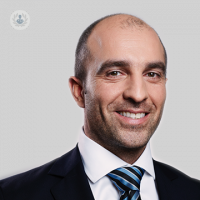Brazilian butt lift - all you need to know
Written in association with:
A Brazilian butt lift is a combination of two procedures of liposuction and fat grafting. The first part involves liposuction of troublesome areas such as the abdomen, thighs and flank. The fat that is removed is then washed and processed, before being reinjected back into the buttocks.

The procedure is a perfect body contouring procedure that has the advantages of making some parts of the body slimmer, while enhancing the shape and volume of the buttocks. If you are interested, or want to find out more, contact our consultant plastic surgeons.
Brazilian butt lift: How long is the operation and what is the recovery time?
The operation typically lasts 2-3 hours under general anaesthesia. The procedure can also be combined with a tummy tuck, depending on the patient and what they can tolerate.
If the Brazilian butt lift procedure is performed on its own, the patient will need to sleep on their front for two weeks to take pressure off the buttocks. If combined with a tummy tuck, the patient needs to be nursed into the foetal position swapping sides regularly.
Most patients are ready to go to back to work after two weeks and light exercise after 6 weeks.
What are the risks of the Brazilian butt lift surgery?
The most common risk of a Brazilian butt lift is asymmetry and a loss of buttock volume secondary to fat grafting reabsorption.
Too much fat reabsorption: Some fat reabsorption is bound to occur following the procedure, though roughly 65 – 85% of the injected fat will remain.
Sometimes the results following fat reabsorption may be poor, making it necessary to have secondary or corrective fat transfer procedures.
Unsatisfactory results: Sometimes the results of surgery may not be to the patient’s liking. This is why the consultant will take time during the consultation process to provide ample information about all of the risks and how patients can achieve the best results given their aesthetic goals.
The most serious risk of the surgery is of infection, which is a common risk in all surgical procedures. The infection is usually treated with antibiotics and the risk is less severe than an infection from implant surgery.
- Other risks include:
- Bleeding/haematoma
- Fluid accumulation/seroma
- Skin necrosis
- Poor wound healing
- Wound dehiscence (rupture of the wound)
- Suture granuloma (development of a benign lesion)
- Skin sensation
- Skin irregularities
- Deep vein thrombosis and pulmonary complications
- Unfavourable scarring
- Suboptimal results
Possible serious side effects:
While minor discomfort, numbness, swelling, and bruising are normal following fat transfer, sometimes patients may experience major pain and discomfort during their recovery. In such instances, they should speak with their surgeon right away.


